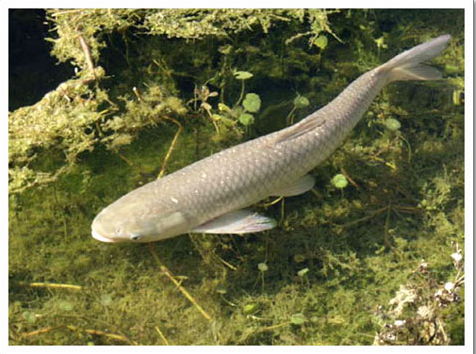November 1, 2017
Grass Carp
Mary Louise Grable

Grass carp are nonnative fish imported from Asia for the control of higher invasive aquatic plant species such as hydrilla. They are a more cost effective method of control than using herbicides
or the use of mechanical means. A combination of the methods is the most effective in trying to control hydrilla. Estimates for using grass carp to control hydrilla are $15 per acre as opposed to $100 – $500 per acre using herbicides. Mechanical harvesting is even more expensive.
Grass carp are one of the largest members of the minnow family. Their life span is approximately 15 years. It takes about 6 months to a year for the fish to become effective in controlling vegetation. One of the few species of fish that eats plants, the grass carp does not eat all varieties of plants. It is important that overstocking does not occur. The grass carp found in Florida lakes have three sets of chromosomes (triploid) and are certified to be sterile. The largest triploid found in Florida was 15 years old, measured 56 inches in length and weighed 75 pounds.
These fish have large scales with a silvery to dark gray back, lighter golden sides and white belly. The body is round with a broad head. The fish are stocked in Johns Lake. Sometimes they are caught while fishing for tilapia or catfish. If a grass carp is caught, it is required that it be released

